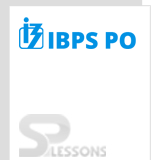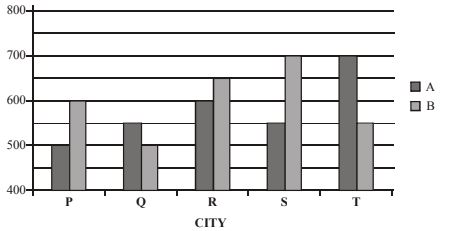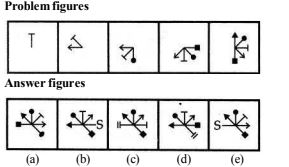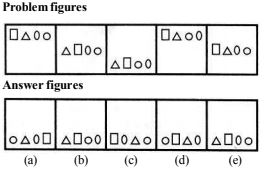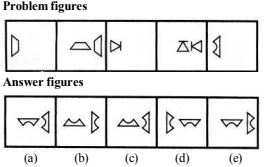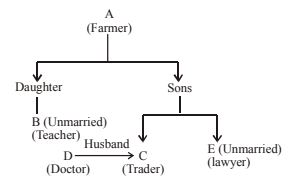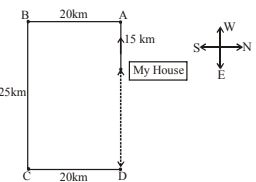 Introduction
Introduction
Career in Banking is one of the most lucrative and most sought after careers. In India, Bank Recruitment Exams are primarily conducted for recruitment of Probationary Officers, Clerks & Specialist Officers. India currently[2019] has 93 commercial and 27 public sector banks out of which 19 are nationalized and 6 are SBI and its associate banks and rest two are IDBI Bank and Bharatiya Mahila Bank, which are categorized as other public sector banks. Recruitment for Bank Probationary Officers, Management Trainees, Clerks and for various other posts generally follow a 3 step recruitment process: Preliminary Exam + Mains Exam + Interview & Group Discussion. The article IBPS PO Prelims Practice Set presents a practice set for the most sought after SBI PO recruitment. Until the year 2013, All Public Sector Banks used to conduct their own entrance test, GDs and Personal Interview for recruiting candidates. However, after 2014, IBPS started conducting recruitment Tests for 12 PSU Banks. SBI holds a separate entrance test for recruitment.
Prelims exams are very important to clear every government sector or bank related recruitment process in India. Prelims are also known as Screening Tests. Only those candidates who are selected in the prelims round are allowed to move further up in the recruitment process. The marks obtained in the preliminary exams are not considered for the final merit list. Preliminary Exams are only meant to be screening tests. Preliminary exams usually consist of 3 sections, with 100 questions with a time duration of 1 hour. Preliminary exams most certainly have negative marking.
 Model Test
Model Test
Directions Q (1 - 10): What should come in place of the question mark (?) in the following questions.
1. (786 × 64) ÷ 48 = ?
-
A. 1050
B. 1024
C. 1048
D. 1036
E. None of these
-
A. 1296
B. 1156
C. 1600
D. 1024
E. None of these
-
A. 6200
B. 6,240
C. 6150
D. 6275
E. None of these
-
A. 1156
B. 1200
C. 1188
D. 1176
E. None of these
-
A. 18.275
B. 21.625
C. 32.375
D. 25.45
E. None of these
-
A. 36
B. 48
C. 32
D. 44
E. None of these
-
A. 36.585
B. 30.082
C. 32.085
D. 35.066
E. None of these
-
A. 14328
B. 14438
C. 13428
D. 13248
E. None of these
-
A. 11236
B. 10816
C. 10404
D. 9604
E. None of these
-
A. 3520
B. 3515
C. 3495
D. 3490
E. None of these
-
A. 31
B. 29
C. 41
D. 37
E. None of these
-
A. 6
B. 8
C. 10
D. 12
E. None of these
-
A. 33
B. 53
C. 63
D. 73
E. None of these
-
A. 594
B. 572
C. 581
D. 563
E. None of these
-
A. 100
B. 64
C. 81
D. 121
E. None of these
-
A. 148
B. 152
C. 156
D. 144
E. None of these
-
A. 13 : 10 : 18
B. 10 : 13 : 17
C. 13 : 15 : 18
D. Cannot be determined
E. None of these
-
A. 64
B. 56
C. 106
D. Cannot be determined
E. None of these
-
A. Rs. 42,500
B. Rs.38,800
C. Rs. 40,000
D. Rs. 35,500
E. None of these
-
A. Rs. 1,737
B. Rs. 1,920
C. Rs. 1,720
D. Rs. 1, 860
E. Rs. 1,843
-
A. Rs. 2
B. Rs. 3.5
C. Rs. 2.5
D. Rs. 1.5
E. None of these
-
A. 7
B. 36
C. 49
D. 6
E. None of these
-
A. 56
B. 48
C. 45
D. Cannot be determined
E. None of these
-
A. 8.2 hours
B. 6.5 hours
C. 8 hours
D. 7.2 hours
E. None of these
-
A. 28
B. 53
C. 44
D. Cannot be determined
E. None of these
-
A. 85
B. 49
C. 57
D. Cannot be determined
E. None of these
-
A. 3215 metres
B. 35.15 metres
C. 32.15 metres
D. 3515 metres
E. None of these
-
A. 17
B. 21
C. 23
D. 15
E. None of these
-
A. Rs. 1,650
B. Rs. 1,548
C. Rs. 1,532
D. Cannot be determined
E. None of these
-
A. Rs. 1,330
B. Rs. 1,315
C. Rs. 1,335
D. Rs. 1,320
E. Rs. 1,325
-
A. 2700
B. 3000
C. 3100
D. 2900
E. 3200
-
A. 150
B. 110
C. 140
D. 160
E. 120
-
A. 560
B. 570
C. 580
D. 590
E. 550
-
A. 170
B. 140
C. 130
D. 150
E. 160
-
A. 5 : 7
B. 4 : 7
C. 2 : 5
D. 3 : 4
E. 5 : 6
Directions Q (36 - 40): In each of the questions below are given three statements followed by four conclusions numbered I, II, III and IV. You have to take the given statements to be true even if they seem to be at variance with commonly known facts. Read all the conclusions and then decide which of the givenconclusions logically follow from the given statements disregarding commonly known facts.
36. Statements: All books are notes.
Some notes are pencils.
No pencil is paper.
Conclusions: I. Some notes are books.
II. Some pencils are books.
III. Some books are papers.
IV. No book is a paper.
-
A. Only I and either III or IV follow
B. Either III or IV follows
C. Only I and III follow
D. Neither II nor III follows
E. None of these
-
A. Only I and IV follow
B. Only either II or III follows
C. Only I and III follows
D. Either II or III and I follow
E. None of these
-
A. Either I or III follows
B. All follow
C. Only I and II follow
D. Only III and IV follow
E. None of these
-
A. Either I or IV follows
B. Only I follows
C. Only I and III follow
D. Only II follows
E. None of these
-
A. Only I follows
B. Only II and III follow
C. Only I and III follow
D. Only I and II follow
E. None of these
-
A. All follows
B. Only either I or III follows
C. Only either I or II follows
D. Only either II or III follows
E. None of these
-
A. All follows
B. Either I or II follows
C. Either I or II and III follow
D. Either I or III and II follows
E. None of these
-
A. Only I follows
B. Only II follows
C. Only III follows
D. None follows
E. All follow
-
A. None follows
B. Only either I or II follows
C. Only either I or II and III follow
D. Only III follows
E. All follow
-
A. None follows
B. Only I or II follow
C. Only I and III follow
D. Only II and III follow
E. All follow
-
A. A and D
B. D and E
C. A, C and E
D. B and D
E. None of these
-
A. A and B
B. C and D
C. A and D
D. B and C
E. None of these
-
A. A, B and C
B. B and D
C. C and E
D. A, C and D
E. None of these
-
A. A
B. B
C. C
D. D
E. None of these
-
A. A
B. B
C. C
D. D
E. None of these
-
A. One
B. Two
C. None
D. Three
E. More than three
-
A. ZW1
B. NQ$
C. @8N
D. $W9
E. None of these
-
A. Q
B. Z
C. $
D. W
E. None of these
-
A. 7
B. @
C. 5
D. K
E. None of these
-
A. None
B. One
C. Two
D. Three
E. None of these
-
A. Wait
B. Sit
C. Stop
D. Run
E. None of these
-
A. QLPNMJ
B. QLPNMF
C. QLPMNF
D. QLPNDF
E. None of these
-
A. ×$*%
B. %×$*
C. ×*$%
D. × %*
E. None of these
-
A. Brother
B. Nephew
C. Uncle
D. Father
E. None of these
-
A. 5 km
B. 10 km
C. 40 km
D. 80 km
E. None of these
-
A. NU
B. UN
C. VL
D. NO
E. None of these
-
A. Integrity
B. Honesty
C. Guide
D. Competition
E. None of these
-
A. One
B. Two
C. Three
D. More than three
E. None of these
-
A. N
B. T
C. E
D. R
E. None of these
-
A. Raj
B. Gaurav
C. Mohit
D. Ashish
E. None of these
Directions Q (71 - 80): Read the following passage carefully and answer the questions given below it.
Once upon a time, there lived a vicious king, Raja Shankara– short-tempered and temperamental. "God I am," he said to his image as he stared into the mirror every day, many times a day, He was obsessed with himself. He loved no one but himself. He was blinded towards the injustice in his kingdom because he had little time for his subjects. He wasted most of his time in pouring milk and honey over himself.
An interruption in his possessed life was dealt with stern reprimanding and sometimes on petty issues he would behead his servants. Provoked by his evil advisor Twishar, he went on with his self-indulged life, unaware of the plot his very devoted advisor was planning. A plot to dethrone the king, rule the kingdom with his wicked ways only to harness wealth and the reputation of a king.
One morning the king went on his usual morning horseback rounds but returned with a very sad look on his face. He locked himself inside his platial room only to unlock it at sundown. Just as the doors creaked open and Raja Shankara emerged from it, his wife rushed to embrace him. She feared a damaging incident had occurred.
The king spoke seldom that day and awoke the next day to make a proclamation to his servants and subjects. The whole kingdom feared what was in store for them from their angry king. But to their surprise, he said to all gathered, "From now on I will be a different king. A softer and a patient king."
True to his words from that day on, the king had truly turned on a new leaf; he cleaned out the corruption and injustice in a tender manner with punishments aimed to renew the person from within.
One fine day his evil advisor gathered the courage to ask the reason for his paradigm shift. And the king answered. When I went on horseback that morning a month ago, I noticed a dog brutally chasing a cat. The cat managed to sneak into a hole only after the dog bit her leg, maiming her for life. soon afterward, the dog barked at a farmer who picked up a sharp stone and hit it straight in the dog's eye. Bleeding profusely, the dog yelped in pain. As the farmer walked on, he slipped on the edge of the road and broke his head.
All this happened in a matter of minutes before me and then I realized that evil begets evil. I thought about it deeply and was ready to give up my worldly life for the betterment of my subjects. I wanted to give up the evil in me as I did not want evil to encounter me.
Sniggering away the immoral advisor thought what a perfect time it was to dethrone the king because the Raja had grown kind-hearted and patient and would not endeavor combat. Thinking how he would plan his attack, he stumbled over a step that took him hurling down the remaining steps, bringing him to a stop with a crash. He howled in pain only to discover he had broken the bones in both his legs.
71. How can Raja Shankara be described before his transformation?
1. He was unjust
2. He was preoccupied with himself
3. He was cruel
-
A. Only (1)
B. Only (2)
C. Only (3)
D. Only (1) and (2)
E. All the three (1), (2) and (3)
-
A. As the Valuer was not good at his work
B. As he had dishonored the king
C. As the Valuer had been dishonest with the king about the prices that he set for goods
D. As the king believed that he was not earning much because of the Valuer's honesty
E. None of these
-
A. That he was giving up his throne for the betterment of the kingdom
B. That his advisor would be the king from then on
C. That he would be a better king to them that he had been all this while
D. That his subjects were not good enough to deserve better treatment than what was already being meted out to them
E. None of these
-
A. She was afraid that something really bad had happened
B. She was afraid that the Raja would beat her up because of his unusual mood
C. She thought that he was in his usual sour mood
D. She thought that the Raja had received threats to his life from his servants
E. None of these
-
A. His advisor's words had made him realize his mistake
B. He had felt bad for a poor family on his tour around his kingdom
C. His wife had betrayed him and hence he was upset
D. He had realized that doing good to people would bring good to him
E. He had realized that evil begets evil.
-
A. Believe in yourself
B. Money is not everything in life
C. Don't trust people
D. Better late than never
E. As you sow so shall you reap
-
A. He treated all his servants with respect
B. He would scold them and sometimes cut their heads off over trivial issues
C. He would dismiss them from their duties never to be reinstated
D. He would rob them of all their possessions
E. None of these
-
A. He planned to take over the Raja's throne through devious means
B. He was a loyal servant to the Raja and always had his best interests in mind
C. He had plans to provoking the Raja into ruling the kingdom in more wicked ways
D. He planned to kill the raja with the help of the Raja's servants
E. None of these
-
A. As the Raja was sick, ailing and was on his deathbed
B. As he knew that the Raja had finally lost his mind
C. As he knew that the Raja had become a soft natured person and would not attempt to fight.
D. As he was sure that he would be able to convince that people of the kingdom that the Raja had become weak
E. None of these
-
A. The dog chased the cat and sent it in the misdirection
B. The dog bit the cat's leg and crippled her for life
C. The dog killed the cat
D. Not mentioned in the passage
E. None of these
-
A. was restricting
B. is restricted
C. was restricted
D. is restricting
E. No correction required
-
A. at her witting end
B. at her wit ends
C. to her wit's end
D. so wit's end
E. No correction required
-
A. whiled away his time
B. whiled against his time
C. whiling away his time
D. while away his time
E. No correction required
-
A. made minds
B. make his mind
C. make up his minding
D. made up his mind
E. No correction required
-
A. not found trace
B. find no trace
C. found not trace
D. finding no trace
E. No correction required
-
A. Discussion
B. is an exchange of knowledge
C. whereas argument
D. is a depiction of ignorance.
E. All correct
-
A. He was arrested
B. for the crime
C. and was charged
D. with attempt to murder.
E. All correct
-
A. commit
B. yourself to lifelong learning
C. as the most valuable
D. aset you will have is your mind.
E. All correct
-
A. Belive
B. that life is worth
C. living and your belief will create (c)/
D. the fact.
E. All correct
-
A. The best educated
B. human bing
C. is the one who understands
D. most about the life in which he is placed.
E. All correct
-
A. crawling
B. speaking
C. swimming
D. walking
E. dancing
-
A. journey
B. sand
C. running
D. border
E. hunt
-
A. dead
B. captured
C. presentable
D. missing
E. hurt
-
A. as
B. until
C. from
D. with
E. through
-
A. decided
B. fell
C. made
D. want
E. left
-
A. home
B. stuck
C. blended
D. mixed
E. sitting
-
A. separated
B. leaked
C. died
D. recovered
E. saved
-
A. so
B. how
C. when
D. tomorrow
E. now
-
A. called
B. tell
C. replied
D. questioned
E. asked
-
A. talk
B. push
C. engrave
D. add
E. bury


